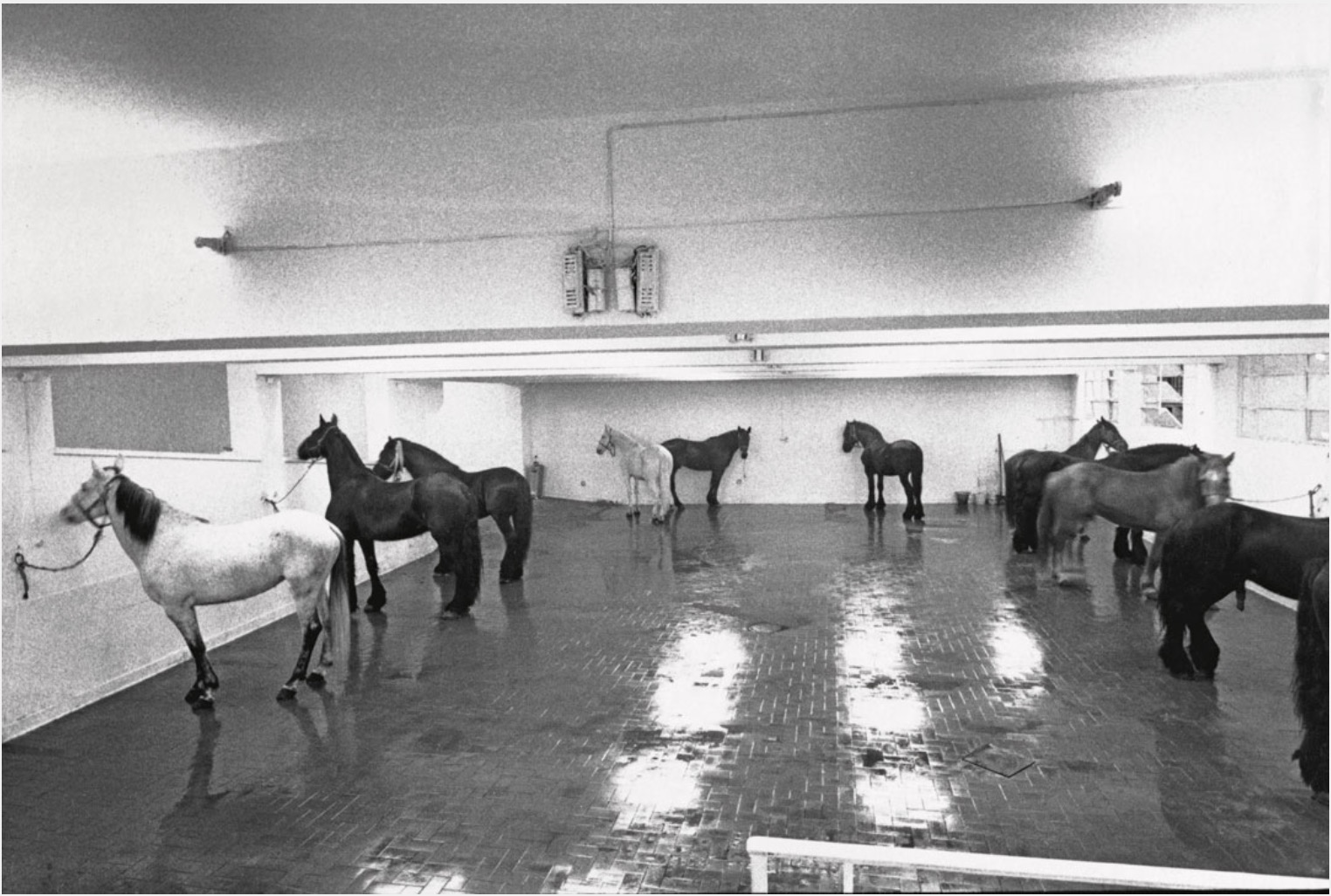FLAT // LAND & Jannis Kounellis:
March 8, 2024

Jannis Kounellis (1936-2017) was born in Piraeus, Greece. From the 1960s onwards, he was an active member of the Arte Povera movement. His ‘Untitled (12 Horses)’ installation features 12 live horses attached to the gallery walls.
First staged on 14 January in 1969 at Galleria L’Attico in Rome, a garage-turned-into-gallery space, the exhibition challenged every convention. Because of the strong smell and risk of being kicked by a horse, visitors described the work as nauseating – “a true Dada gesture”.
Yet, at the same time, the work respected all art conventions: it was held in a gallery space, opened with a vernissage, and featured one of the most classical themes in art history, horses – think of the horses of da Vinci, Velazquez, Delacroix….
For the art historian and collector Giuseppe Garrera, those that visited this show came to find a poetic memorial element: although kept in captivity, the unsaddled beauty of the horses appeared totally alien to the true absurdity of modern human civilisation, which uses and slaughters a million heads of cattle every day.
Why do we, humans, behave in such an absurd way? – appears as the central question posed by Kounellis’ horses.
Image: Jannis Kounellis, Untitled (Cavalli), 1967, 12 horses, installation view at Galleria L’attico, Rome, 1969.
HORSES & ETHOLOGY: